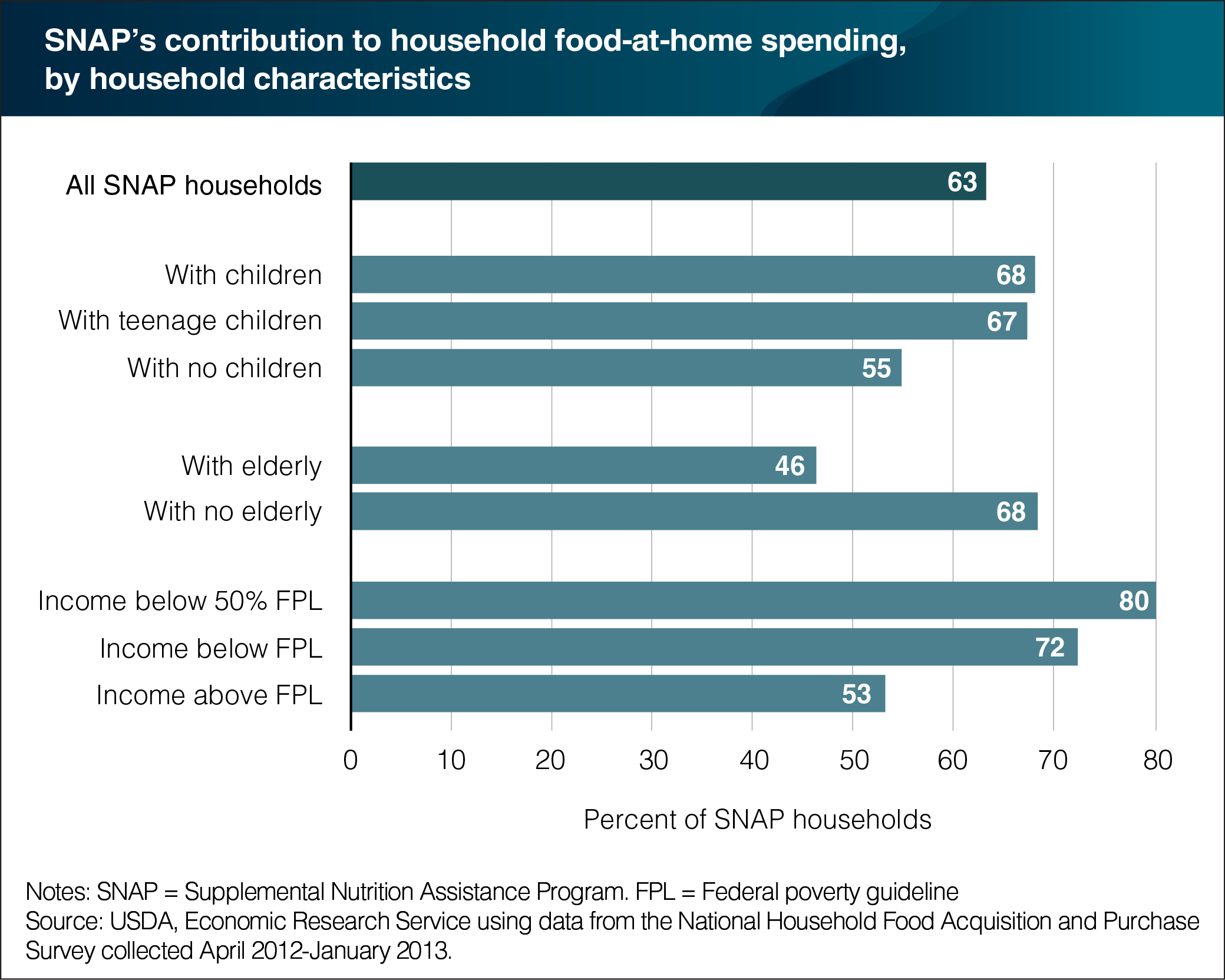SNAP benefits play a strong role in the food budgets of participant households with children and those in deep poverty
- by Laura Tiehen
- 10/12/2017

USDA’s Supplemental Nutrition Assistance Program (SNAP) is designed to increase the food purchasing power of program participants. The program provides low-income households with monthly benefits for purchasing food from authorized food stores (referred to as “food at home”). A recent ERS study found that SNAP benefits accounted for 63 percent of the average food-at-home spending of SNAP households in 2012, with households using other resources, such as their own income or benefits from other programs, to pay for the remaining 37 percent. SNAP’s contribution to food-at-home spending was higher than the average for SNAP households with children, those with no elderly members, and those in poverty. SNAP is designed so that benefits increase with household size and decrease with income, and households with lowest incomes per household member receive higher SNAP benefits. SNAP benefits accounted for 80 percent of food-at-home spending of SNAP households with incomes below 50 percent of the Federal poverty guidelines in 2012. This chart appears in the ERS report, Food Spending Patterns of Households Participating in the Supplemental Nutrition Assistance Program: Findings from USDA’s FoodAPS, August 2017.

